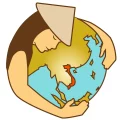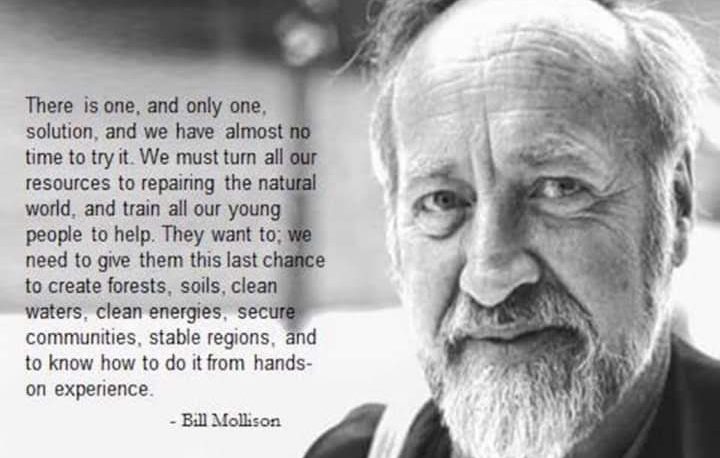You will hear many interpretations as to what Permaculture is, but one thing that should remember is that it is NOT just about gardening.
It is a complete systems design for creating ecosystems that include gardens, communities, and your home.
The term was coined by Bill Mollison and David Holmgren in 1978, who formulated the concept in opposition to Western industrialized methods and in congruence with Indigenous or traditional knowledge. Permaculture is an approach to land management and settlement design that adopts arrangements observed in flourishing natural ecosystems. It includes a set of design principles derived using whole-systems thinking. It applies these principles in fields such as regenerative agriculture, town planning, rewilding, and community resilience. Permaculture originally came from "permanent agriculture",but was later adjusted to mean "permanent culture", incorporating social aspects. The term was coined in 1978 by Bill Mollison and David Holmgren, who formulated the concept in opposition to modern industrialized methods instead adopting a more traditional or "natural" approach to agriculture. Permaculture has many branches including ecological design, ecological engineering, regenerative design, environmental design, and construction. It also includes integrated water resources management, sustainable architecture, and regenerative and self-maintained habitat and agricultural systems modeled from natural ecosystems. Permaculture uses creative design processes based on whole-systems thinking, considering all materials and energies in flow that affect or are affected by proposed changes. In practical terms, it means that before, for example, modifying overland water flow, one fully considers both upstream and downstream effects in the short and long terms. Or, when looking at a "problem", such as brushy vegetation, one considers how removing or altering it will affect soil and wildlife, and how these interacting forces would evolve over time and space. What is permaculture?
Permaculture is grounded in the 3 ethics, Care of Self, Care of the Earth, Care of the Future and 12 principles.
Care of Self,
Care for People starts with the self, but it expands in widening circles to include our families, neighbours, local and wider communities. In this sense it follows the pattern of almost all traditional (tribal) ethical systems.
PERMACULTURE-Principles & Pathways Beyond Sustainability, David Holmgren Co-originator of the Permaculture Concept
Care of the Earth
Care for the Earth can be taken to mean caring for living soil as the source of (terrestrial7) life and for which we have the greatest responsibility. In this sense, Care for the Earth builds on both the scientific and ethical traditions of the larger
and older organic (biological) agriculture movements.
PERMACULTURE-Principles & Pathways Beyond Sustainability, David Holmgren Co-originator of the Permaculture Concept
Set limits to consumption and reproduction, and redistribute surplus. (Care of the Future)
In Permaculture: A Designers' Manual, Mollison focuses on Setting Limits, but the principle is often taught with emphasis on the more positive Redistribution of Surplus. The apparently contradictory messages of abundance and limits encourage us to repeatedly ponder the meaning and expression of these two aspects of nature as a paradox which should continuously reshape our ethical response to life’s opportunities and problems.
PERMACULTURE-Principles & Pathways Beyond Sustainability, David Holmgren Co-originator of the Permaculture Concept
Holmgren articulated twelve permaculture design principles in his Permaculture: Principles and Pathways Beyond Sustainability:
Observe and interact
Take time to engage with nature to design solutions that suit a particular situation.
Catch and store energy
Develop systems that collect resources at peak abundance for use in times of need.
Obtain a yield
Emphasize projects that generate meaningful rewards.
Apply self-regulation and accept feedback
Discourage inappropriate activity to ensure that systems function well.
Use and value renewable resources and services
Make the best use of nature's abundance: reduce consumption and dependence on non-renewable resources.
Produce no waste
Value and employ all available resources: waste nothing.
Design from patterns to details
Observe patterns in nature and society and use them to inform designs, later adding details
Integrate rather than segregate
Proper designs allow relationships to develop between design elements, allowing them to work together to support each other.
Use small and slow solutions
Small and slow systems are easier to maintain, make better use of local resources and produce more sustainable outcomes.
Use and value diversity
Diversity reduces system-level vulnerability to threats and fully exploits its environment.
Use edges and value the marginal
The border between things is where the most interesting events take place. These are often the system's most valuable, diverse and productive elements.
Creatively use and respond to change
A positive impact on inevitable change comes from careful observation, followed by well-timed intervention
Permaculture is also a global movement of individuals, groups, and networks working to create the world we want, by providing for our needs and organizing our lives in harmony with nature. The movement is active in the most privileged and the most destitute communities and countries.

